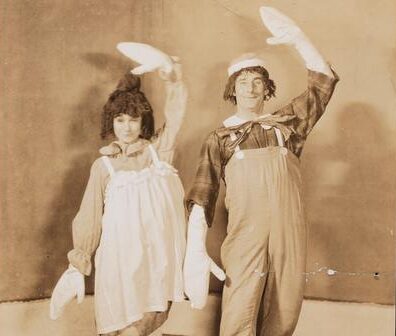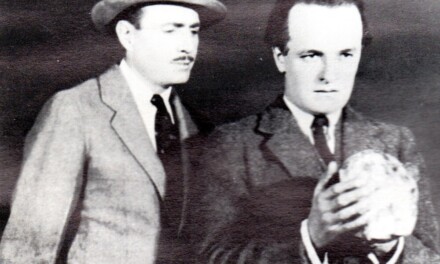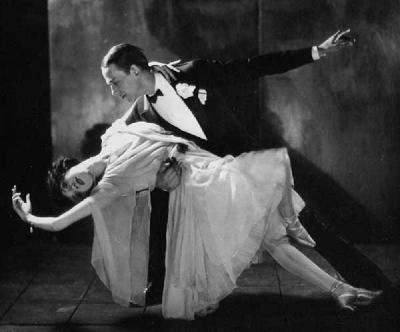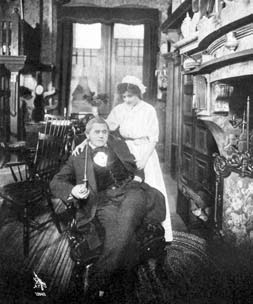
The Return of Peter Grimm
By Samuel L. Leiter
The production of revivals in the 1921-1922 season brought little glory to the plays resuscitated or to the season through which they were scattered. Most were of plays from the previous half century, others were of more recent vintage, sometimes including their original stars, while classics were notably in the minority. In total there were 21 revivals, eight of them classics (seven by Shakespeare and one by Sheridan). The revivals surveyed here are The Rivals, Ghosts, Mrs. Warren’s Profession, The Return of Peter Grimm and Fedora.
Sheridan’s The Rivals was produced by the Players’ Club as the first of what would become an annual all-star gala; none of the Bard’s plays, however, was independent, each being in the touring repertories of Shakespearean stars, the 40-year-old Fritz Leiber (Macbeth, Romeo and Juliet, Julius Caesar) and the aging E.H. Sothern and Julia Marlowe (Twelfth Night, The Taming of the Shrew, Hamlet, The Merchant of Venice).
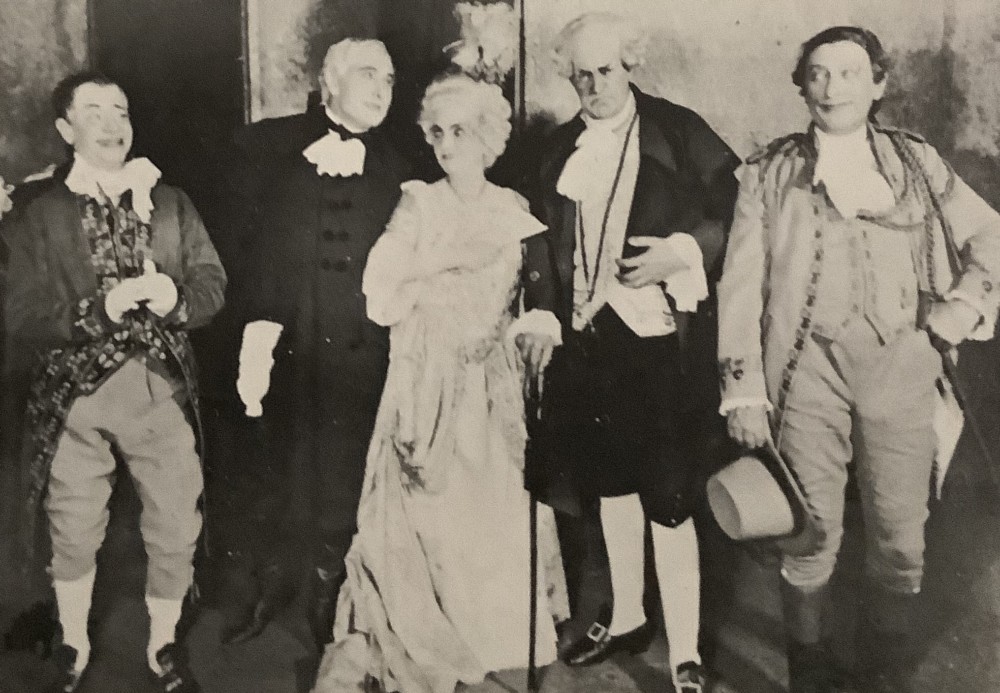

The Rivals:James T. Powers, John Craig, Mary Shaw, Tyrone Power, Sr., Henry E. Dixey
The Rivals (Empire Theatre, 5/5/22, 8), even this second-rate version, directed by William Seymour for a week of performances, stood out, primarily because it had so many name actors in it. Sheridan’s comedy of 1775, still revived with some frequency, was given in the abbreviated version made popular in the nineteenth century by Joseph Jefferson, who tailored it to display his role of Bob Acres, now taken by Francis Wilson.
James T. Powers portrayed David, Tyrone Power, Sr., played Anthony Absolute, Robert Warwick was Captain Absolute, Pedro de Cordoba was Faulkland, John Craig played Sir Lucius O’Trigger, Henry E. Dixey acted Fag, Mary Shaw portrayed Mrs. Malaprop, and Violet Heming was Lydia Languish. Most of these names are now forgotten but they were Broadway stalwarts back in the day.
After having been absent from New York stages for nearly three decades, The Rivals was fresh to most reviewers. Its charms barely shimmered, though, in Jefferson’s heavily trimmed adaptation, which even omitted the role of Julia. Some deemed the result a mutilation. “Acknowledged masterpieces ought to be treated with some reverence,” barked John Ranken Towse.
However well known the cast, its difficulties with eighteenth-century comedy were vividly displayed, vocally and physically. Only Dixey and Power walked off with faint bravos. One or two of the same actors played their roles again in a 1923 revival by the union-sponsored Equity Players (for which Eva Le Gallienne struggled to play Julia) and a 1930 version notable mainly for the Mrs. Malaprop of the aging Mrs. Fiske, one of the true stars of the period.
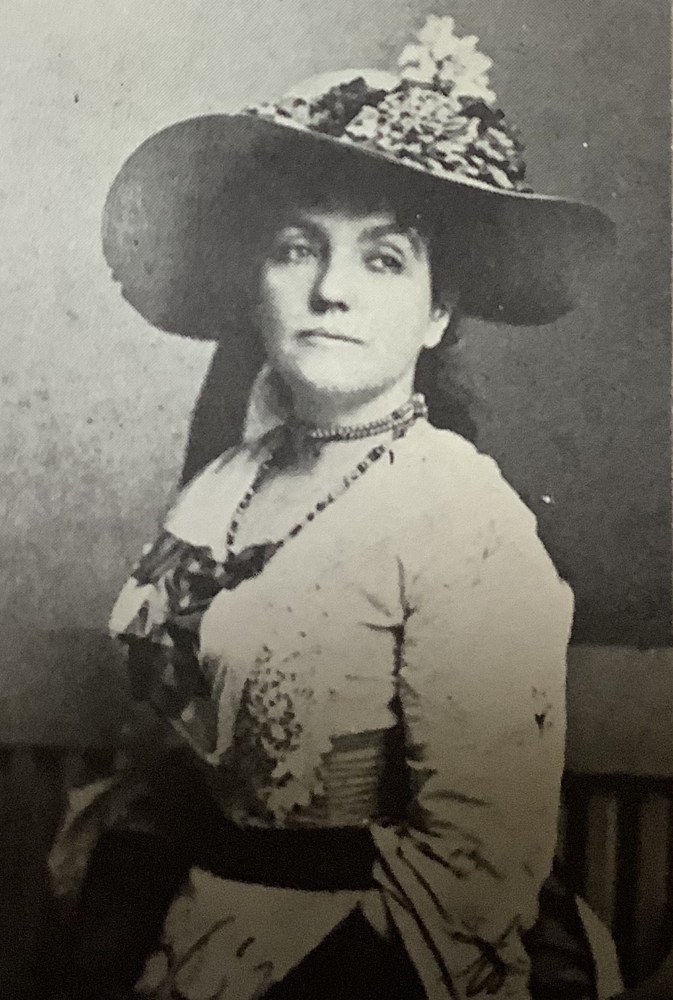

Ghosts – Mary Shaw – 1899 production
From the previous half-century came such modern classics as Ibsen’s Ghosts, Shaw’s Mrs. Warren’s Profession and Candida, Du Maurier’s Trilby, and Sardou’s Fedora—the first written in 1881, the second in 1893, the third in 1894, the fourth in 1895, and the last in 1882. None was given a notable revival, so a few words will be dispensed only on Ghosts, Mrs. Warren’s Profession, and Fedora.
The most significant thing about Ghosts (Punch and Judy Theatre, 2/26/22, 21) was that it was produced by Mary Shaw, Mrs. Malaprop in that season’s staging of The Rivals. Shaw’s major claim to fame, though, was having been the first American actress to play Mrs. Alving, back in the 1890s. Shaw, who had done Ghosts in several earlier revivals, offered it now in repertory with Mrs. Warren’s Profession, another important modern drama she’d introduced to New York. Sorry to report, though, neither production was distinguished.
The Times said of Ghosts (which would have five more revivals in the 1920s alone): “It is a fairly competent and reasonably well acted presentation. . . . Miss Shaw’s characterization has deepened with constant performance, and, if it has also taken on certain mannerisms with the passing of time, these are perhaps excusable.”
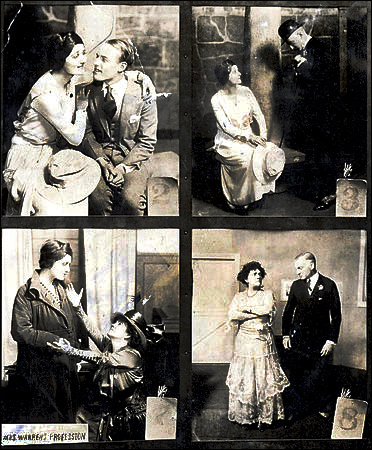

Mrs. Warren’s Profession – Mary Shaw 1918 revival
Shaw was just as closely connected to Mrs. Warren’s Profession (2/22/22, 25), having been arrested along with her company, when that play, about a widowed, Victorian-era brothel owner, premiered in New York in 1905. Like Ghosts, it was revived by her on later occasions, as recently as 1918, in fact. Sadly, the 1922 showing was a shabby one, driving the Playgoer to lament: “Every player went more or less ‘on his own,’ and the performance resolved itself into a memory test in which . . . the actor with the smallest part scored the highest mark.”
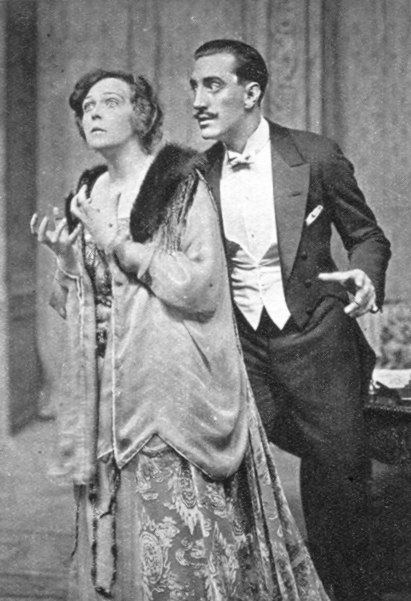

Fedora
Fedora revisited Victorien Sardou’s turgid, nineteenth-century melodrama as an excuse for giving Australian star Marie Lohr a vehicle for her New York debut. She had revived it under her own direction in London, in 1920, with Basil Rathbone playing opposite her as Count Louis Ipanoff, a role taken here by 31-year-old British actor Herbert Marshall in his first Broadway show. Having lost his right leg in the war, he went on to great success on stage and screen.
The play rattled more loudly for Lohr’s extravagant performance, of which Charles Darnton said she established herself “as an emotional actress of uncommon power.” She is probably best known today for playing Mrs. Higgins, Henry’s mother, in the 1938 movie Pygmalion.
New York had last seen Fedora in 1905, when Sarah Bernhardt played it on tour, and many older theatregoers could also remember it with Fanny Davenport and Bertha Kalich in the title role. The plot tells of Russian Princess Fedora Romazova, who turns over Count Ipanoff to the law for a murder she later learns was justified. She then poisons herself when she realizes she loves him. Lohr had a personal triumph, but the play was too dated and hokey to stir up interest.
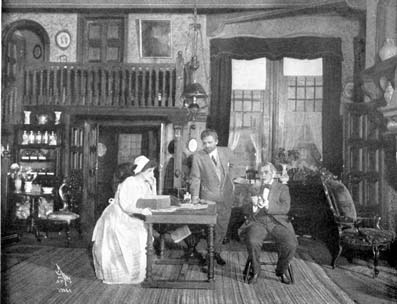

The Return of Peter Grimm – David Warfield seated right
Closer in time to the 1921-1922 season were The Return of Peter Grimm (1911), Bought and Paid For (1911), Alias Jimmy Valentine (1909), The Squaw Man (1905), The Deluge (1917), The Pigeon (1912) and Billeted (1917). One could add to this list French playwright Eugene Brieux’s Madame Pierre, called The Incubus when it had its New York premiere 1909 and The Affinity when it returned a year later. Its French title, though, was Les Hannetons.
Of these, The Return of Peter Grimm (Belasco Theatre, 9/21/22, 78), which was one of David Belasco’s greatest successes as a playwright-director-producer, is as good an example as any to look back on. Revived a decade after its premiere, it again had the beloved star David Warfield in the title role, one of the most important of his career.
The fantastical tale is about how Peter, a crotchety, old, Dutch tulip-grower, of upstate New York, fascinated by the unknown, fulfills a promise to return from the dead when his departed spirit communicates with the living through a child with psychic powers. It remained powerfully evocative in Warfield’s epochal portrayal.
As in most Belasco productions, there was enormous regard for all of the niceties of stage realism, with curtains blowing in the breeze and real water dripping like rain from the eaves after a storm. In addition to Warfield, five other original cast members returned, like the dead come back to life, you might say. Alexander Woollcott called the revival “flawless” and said the play’s “great tenderness seemed unfinished and its curious spell unbroken.”
The tale was, of course, so potent it was turned into a 1926 silent film and 1935 talkie, starring Lionel Barrymore, the Lux Radio Theatre version of which can be accessed here.
You needn’t be psychic to believe that Leiter Looks Back will soon return, from the living (one hopes), not the dead. The next installment will open the curtain on five important plays from 1922-1923. What those will be is as yet unknown, but the possibilities include The Torch-Bearers, R.U.R., Seventh Heaven, Six Characters in Search of an Author, Rain, Merton of the Movies, The God of Vengeance, and The Adding Machine, among others of particular interest. To cite one of the possible titles, The Awful Truth is that choosing five won’t be easy.



